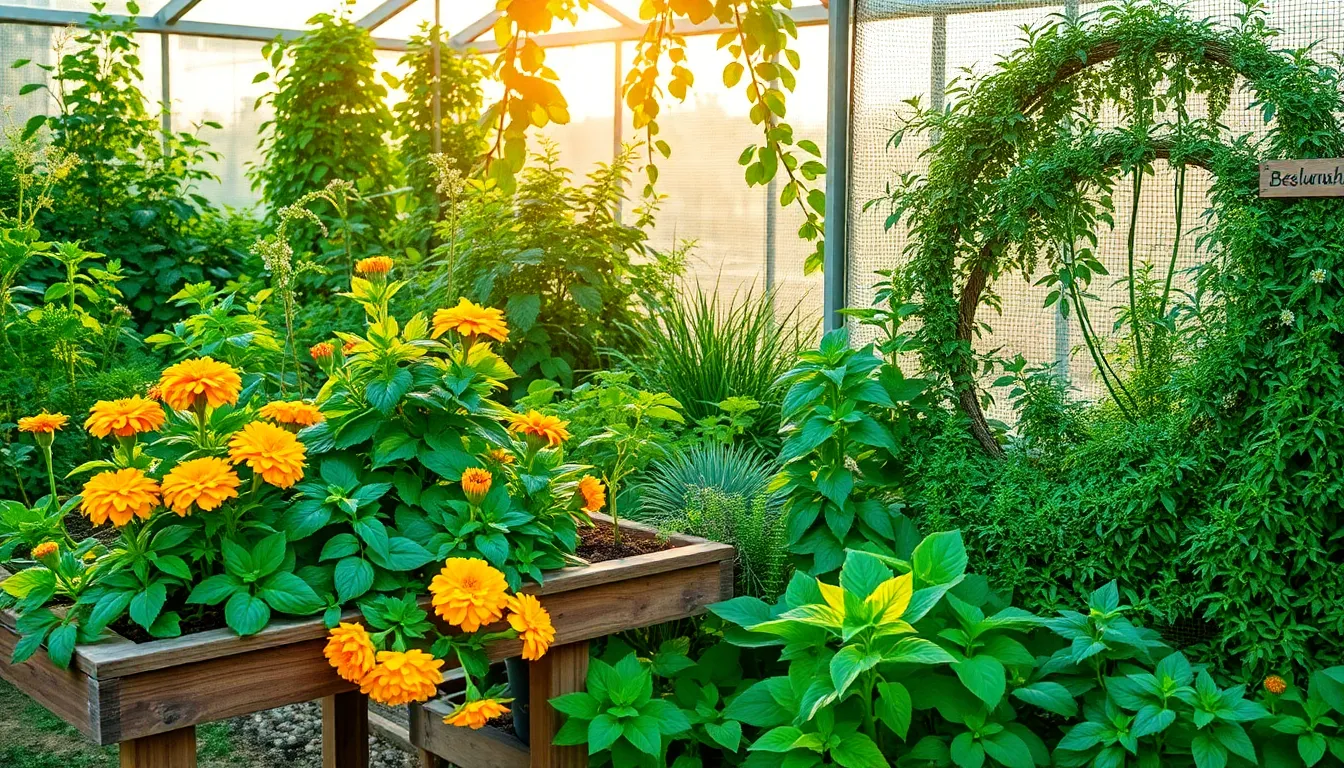Gardening is a joyful dance with nature, where each season brings new opportunities to nurture our green spaces. Whether you’re just beginning to dig your first garden bed or you’ve spent years cultivating a lush paradise, “Best Time To Repel Garden Pests Naturally” is your trusted companion in maintaining a thriving, pest-free haven. This guide is not just about keeping unwanted critters at bay—it’s about empowering you to embrace nature’s rhythms and find harmony in your garden.
In tackling pests with natural methods, you’ll discover the beauty of working with the environment rather than against it. From the seasoned gardener looking to refine their pest management strategies to the novice eager to learn the ropes, this guide offers practical, actionable advice tailored to every level of expertise. You’ll explore techniques that not only protect your plants but also enhance the overall health and ecosystem of your garden, ensuring bountiful blooms and abundant harvests.
Armed with this knowledge, you’ll feel confident and inspired to take on any pest-related challenge that comes your way. Embrace the satisfaction of seeing your garden flourish, knowing that each step you take is a gentle nudge towards a more sustainable, vibrant future. Let’s embark on this journey together and unlock the secret to a garden that is as resilient as it is beautiful.
Neem Oil Spray (Natural Insect Deterrent)

Neem oil spray is a powerful natural solution for repelling garden pests without harming your plants. Derived from the seeds of the neem tree, it is an organic product that disrupts the life cycle of pests like aphids and spider mites, making it a great choice for organic gardeners.
To create an effective neem oil spray, mix two teaspoons of neem oil with a teaspoon of mild liquid soap in a quart of warm water. Spray your plants thoroughly, ensuring you coat the undersides of leaves where pests often hide, using this treatment every 7 to 14 days as needed.
It’s important to apply neem oil spray during cooler parts of the day, such as early morning or late afternoon, to prevent leaf burn. Additionally, avoid applying it in direct sunlight or during extreme temperatures to ensure the spray remains effective.
For those with more experience, consider integrating neem oil into a broader pest management plan by alternating it with other natural deterrents like insecticidal soap. This rotation helps prevent pests from developing resistance and keeps your garden healthy and vibrant all season long.
Companion Planting (Strategic Pest Control)
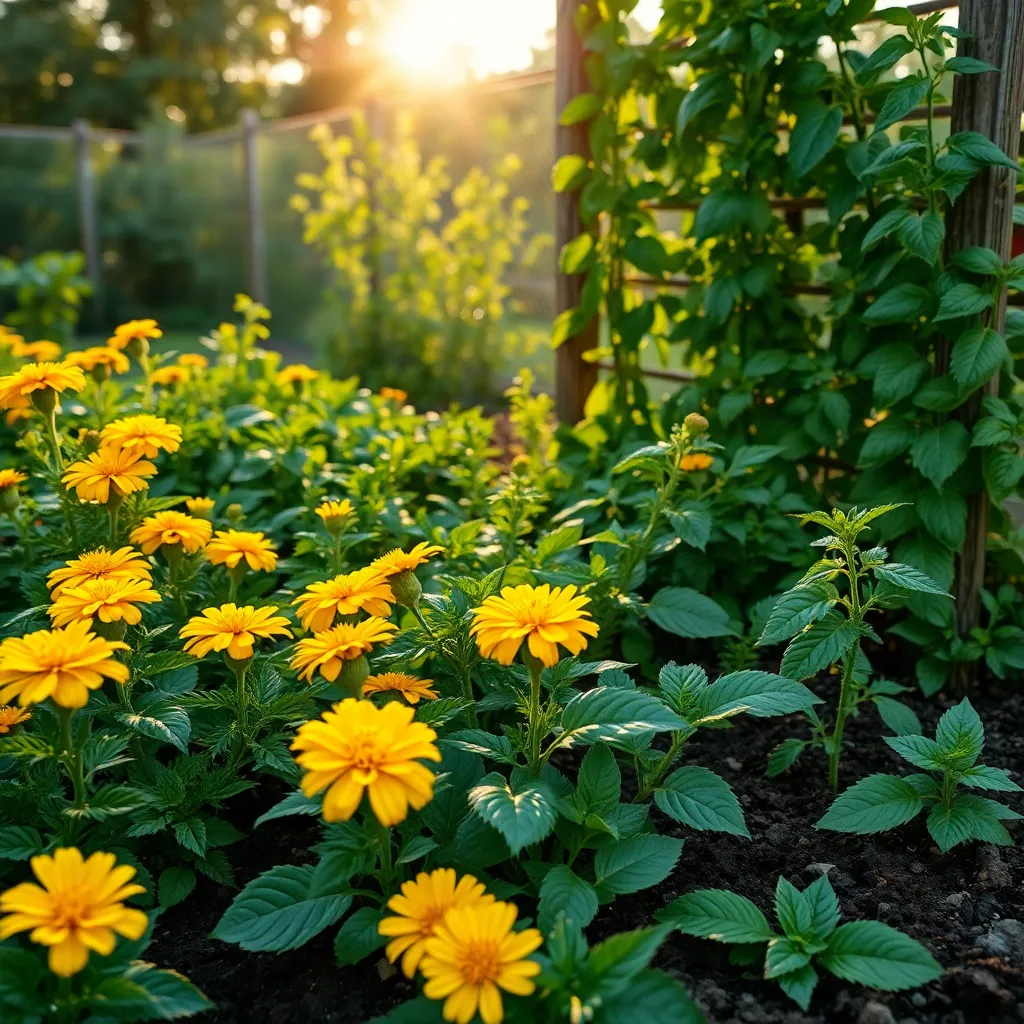
Companion planting is an excellent strategy for natural pest control in your garden. By growing certain plants together, you can deter pests and promote healthier plant growth.
Plants such as marigolds, basil, and mint are known to repel insects like aphids and mosquitoes. Positioning these aromatic plants near vulnerable crops can help safeguard them from common garden pests.
Incorporating trap crops, like nasturtiums, can attract pests away from your valuable vegetables. This technique is particularly effective in managing pests such as aphids and caterpillars, offering them a more appealing alternative.
For gardeners aiming to enhance soil health while controlling pests, consider interplanting legumes like beans or peas. These plants not only enrich the soil with nitrogen but also attract beneficial insects that prey on harmful pests.
Diatomaceous Earth (Non-Toxic Pest Barrier)
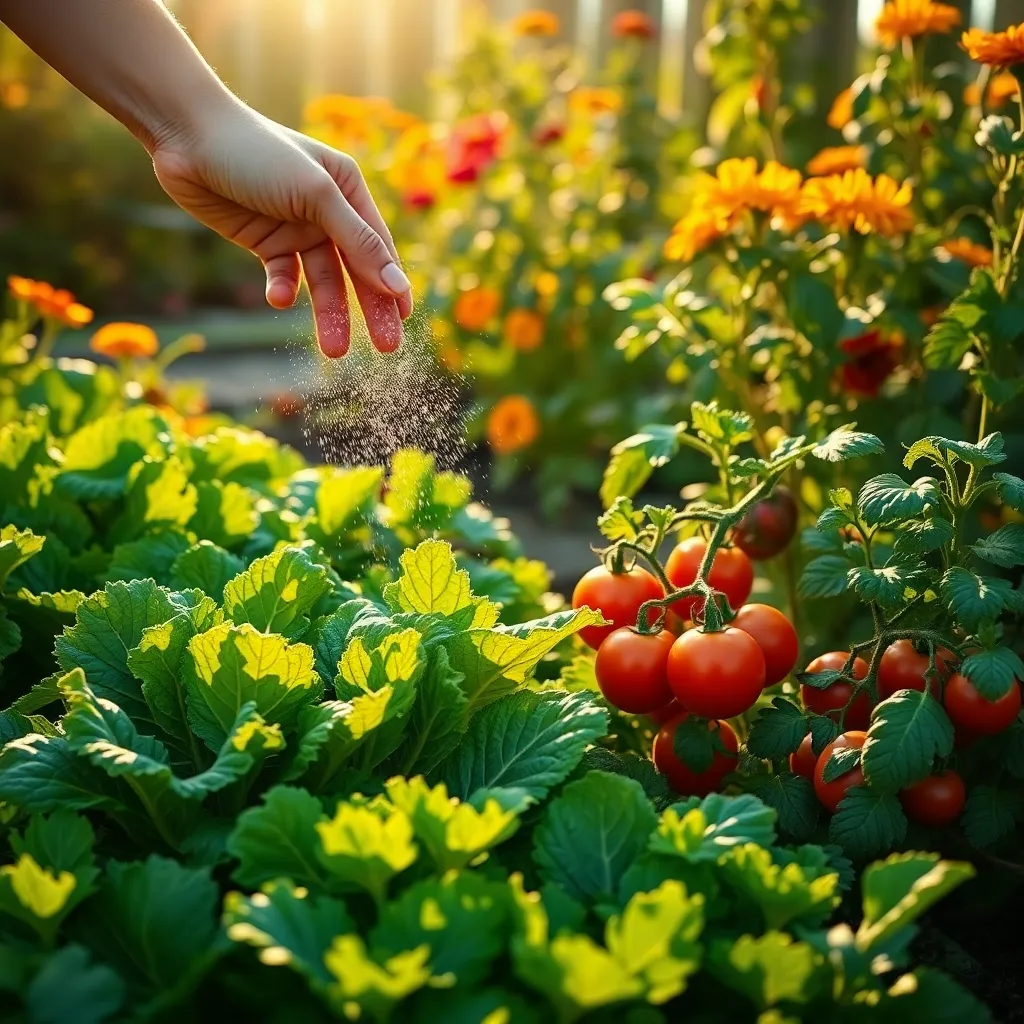
Diatomaceous Earth (DE) is a fantastic non-toxic solution for keeping pests at bay in your garden. This natural powder is made from the fossilized remains of tiny aquatic organisms called diatoms, and it’s both safe for humans and lethal to many garden pests.
To use DE effectively, sprinkle it lightly around the base of your plants where pests are likely to crawl. Ensure the area is dry before application, as moisture can reduce its effectiveness by clumping the powder together.
For best results, reapply DE after rain or watering, since it can wash away and lose its efficacy. Focus on creating a barrier around your plants, especially those prone to slug and ant infestations, to prevent these pests from reaching your crops.
Advanced gardeners might employ DE as part of an integrated pest management system, combining it with other natural methods like companion planting. Always wear a mask when applying DE to avoid inhaling the fine particles, and consider using a duster to apply it evenly over large areas.
Floating Row Covers (Seasonal Protection)
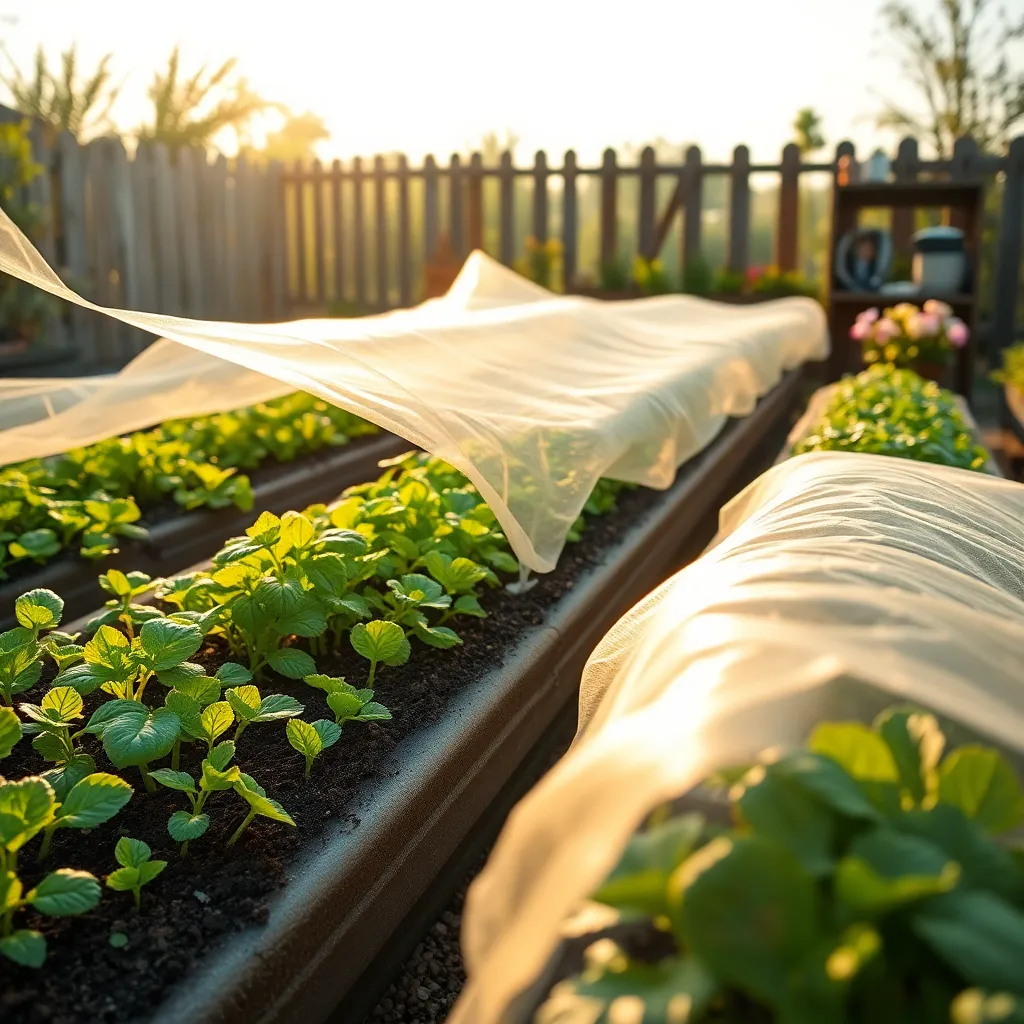
Floating row covers are a versatile tool for protecting your plants from pests while also offering seasonal insulation. These lightweight fabrics can be draped over crops to create a physical barrier, preventing insects from reaching your plants.
When using floating row covers, it’s essential to ensure that the edges are securely anchored to the ground. This can be done using rocks, soil, or stakes, creating a snug fit that keeps pests out while allowing light and water to penetrate.
For beginners, selecting the right type of cover is crucial; lightweight covers are excellent for pest control, while heavier covers provide frost protection. Advanced gardeners might consider using floating row covers for extending the growing season, as they can help maintain higher temperatures around plants during cooler months.
To optimize the effectiveness of row covers, monitor your plants regularly for any signs of stress, such as wilting or discoloration. If you notice any issues, adjust the cover to ensure adequate airflow and prevent overheating, especially during warmer days.
Beneficial Insects Release (Eco-Friendly Pest Management)
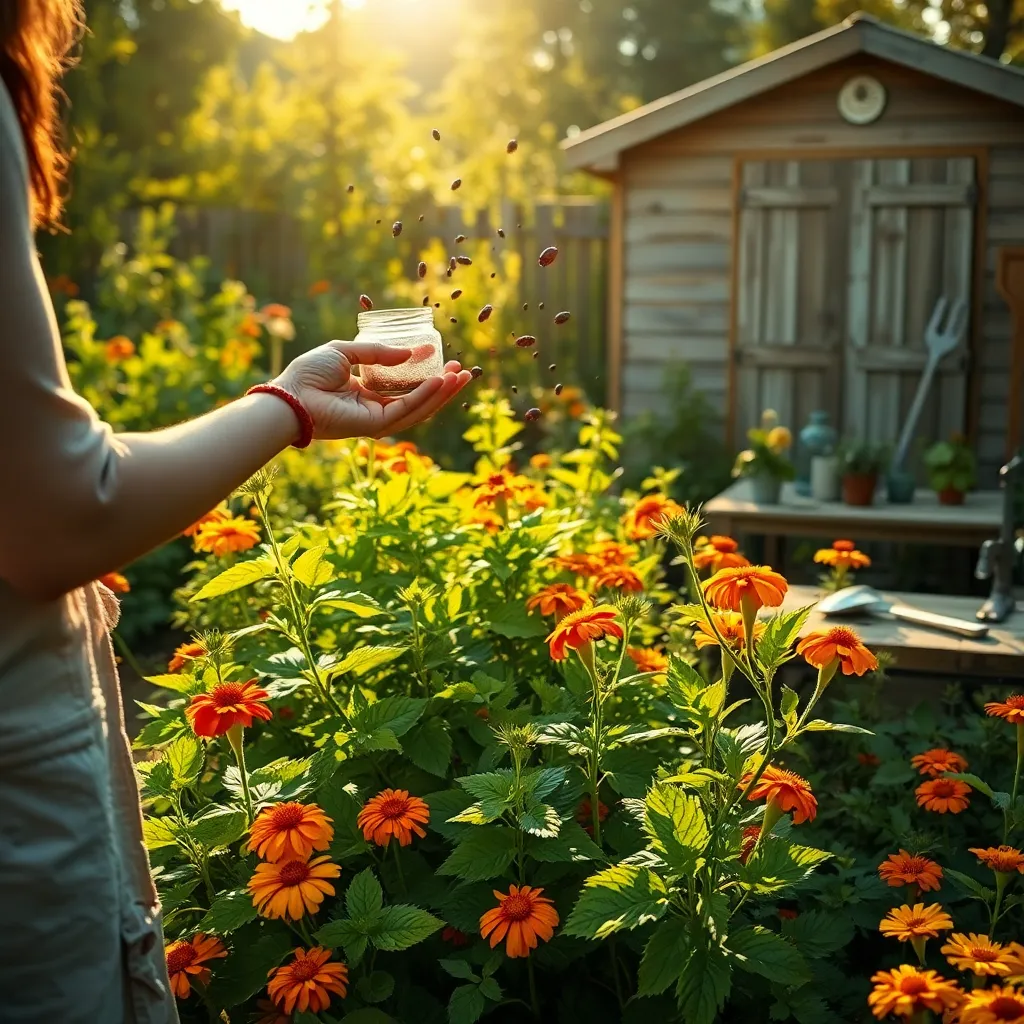
Introducing beneficial insects into your garden is an effective way to manage pests naturally. These insects, such as ladybugs and lacewings, prey on common garden pests like aphids and caterpillars, reducing the need for chemical pesticides.
To attract and sustain these beneficial insects, plant a variety of flowers that bloom throughout the growing season. Flowers such as cosmos, marigolds, and dill provide both nectar and pollen, which support these insects’ life cycles.
For best results, release beneficial insects in the early morning or late afternoon when temperatures are cooler. This helps ensure they settle into their new environment without stress and begin their work as natural pest controllers.
Gardeners can purchase beneficial insects from reputable suppliers or encourage them naturally by maintaining a diverse plant ecosystem. Ensuring a balance between pest populations and beneficial insects is key to a thriving, healthy garden.
Conclusion: Growing Success with These Plants
In this enlightening journey through natural pest repellents, we’ve explored five pivotal relationship concepts between gardeners and their green companions. First, we uncovered the importance of timing, emphasizing that the right moment can make all the difference in nurturing a flourishing garden. Second, we highlighted the value of understanding nature’s rhythms, ensuring harmony between plants and their environment. Third, we discussed communication—listening to your garden’s needs just as we would in any successful relationship. Fourth, we delved into the power of patience, recognizing that lasting results require time and care. Finally, we celebrated the joy of collaboration, encouraging partnerships with nature’s allies, like beneficial insects.
As a practical step, why not start by identifying one pest in your garden and researching a natural remedy today? This small action can pave the way for a healthier, happier garden.
Remember, successful relationships, like thriving gardens, are built on knowledge and practice. Bookmark this article as a trusted resource for future reference. By applying these principles, you’re setting the stage for enduring relationship success, where both you and your garden can flourish together. Empower yourself with these insights, and watch your green haven—and your relationship with it—bloom beautifully.

